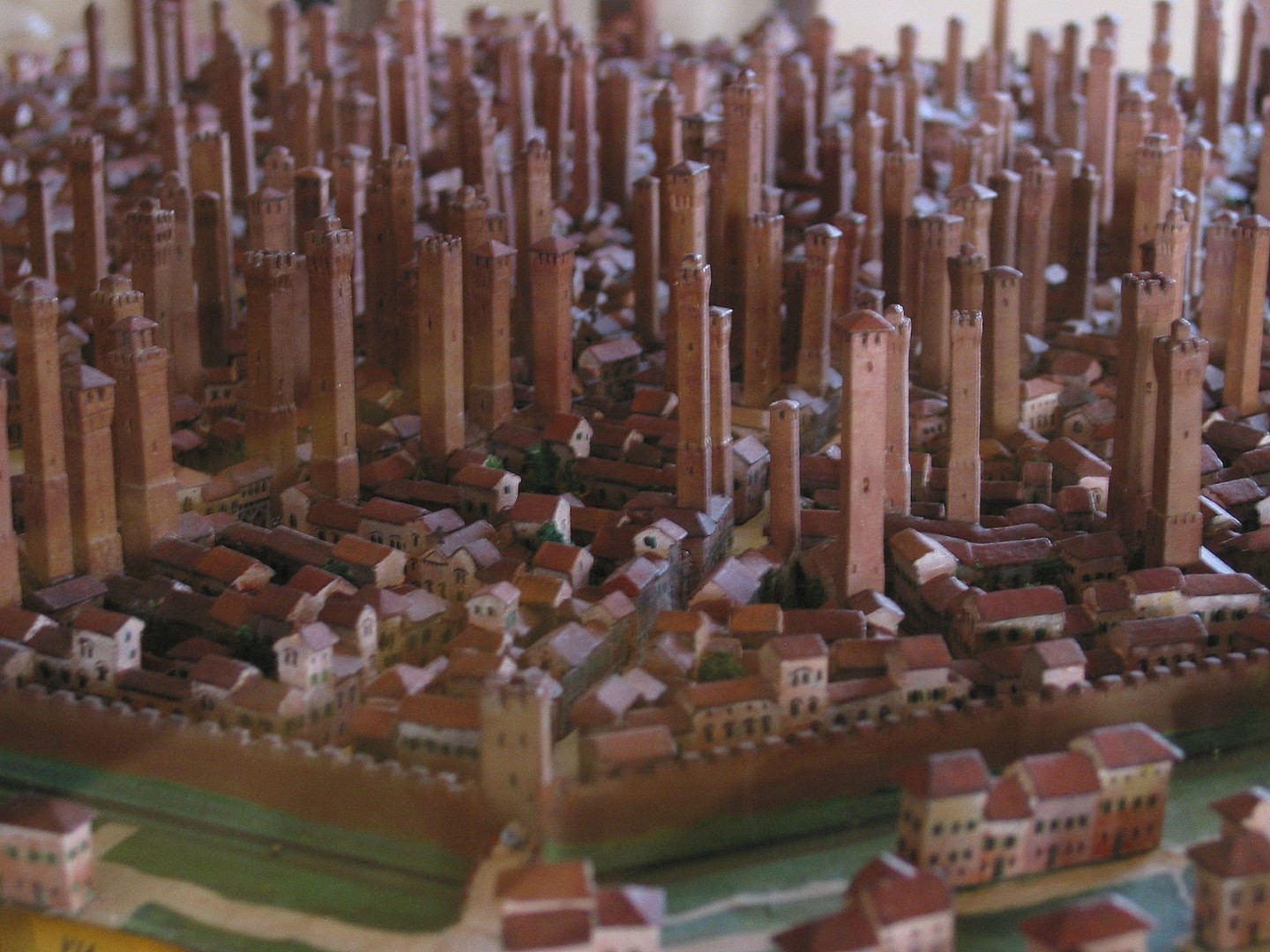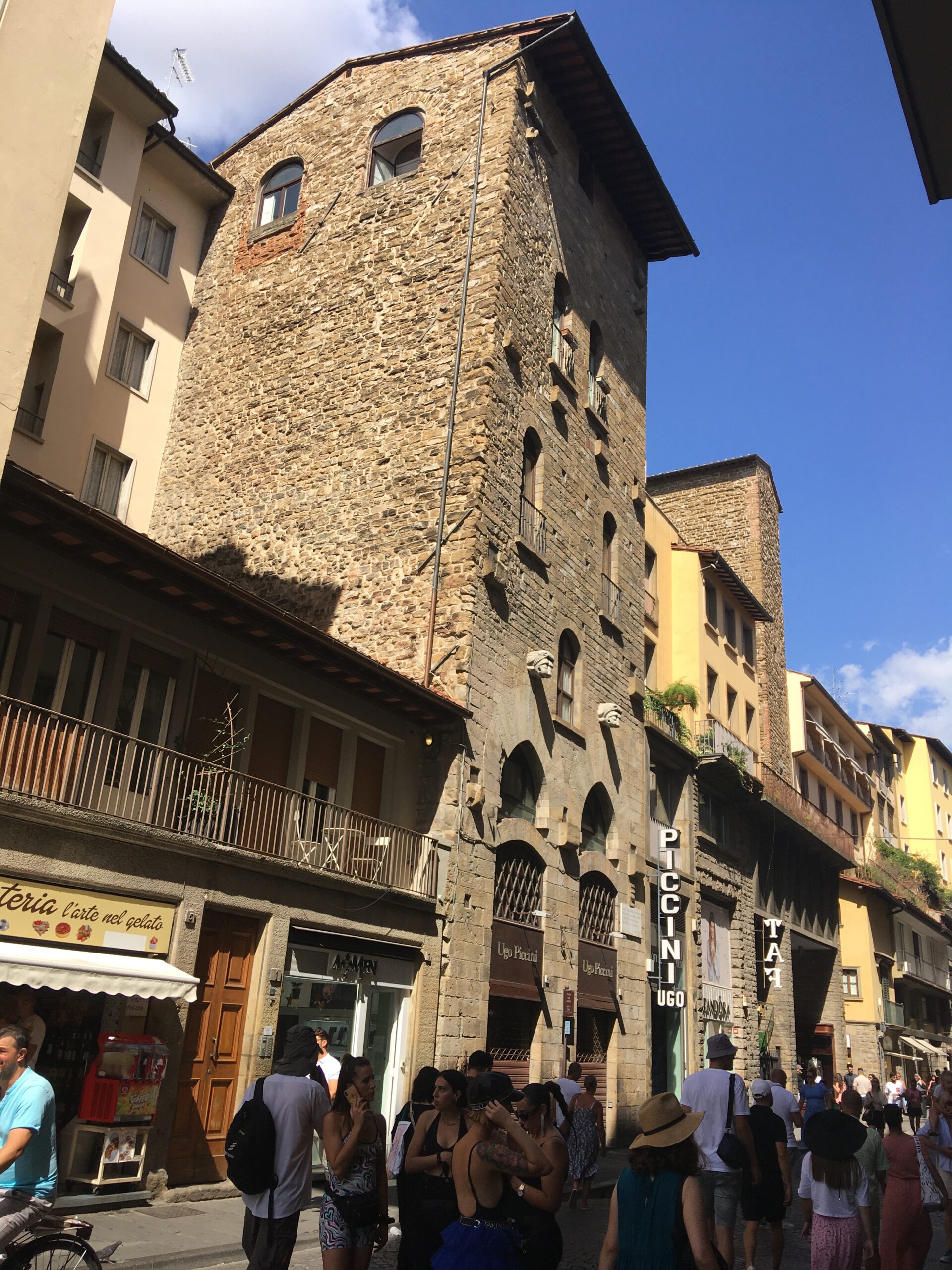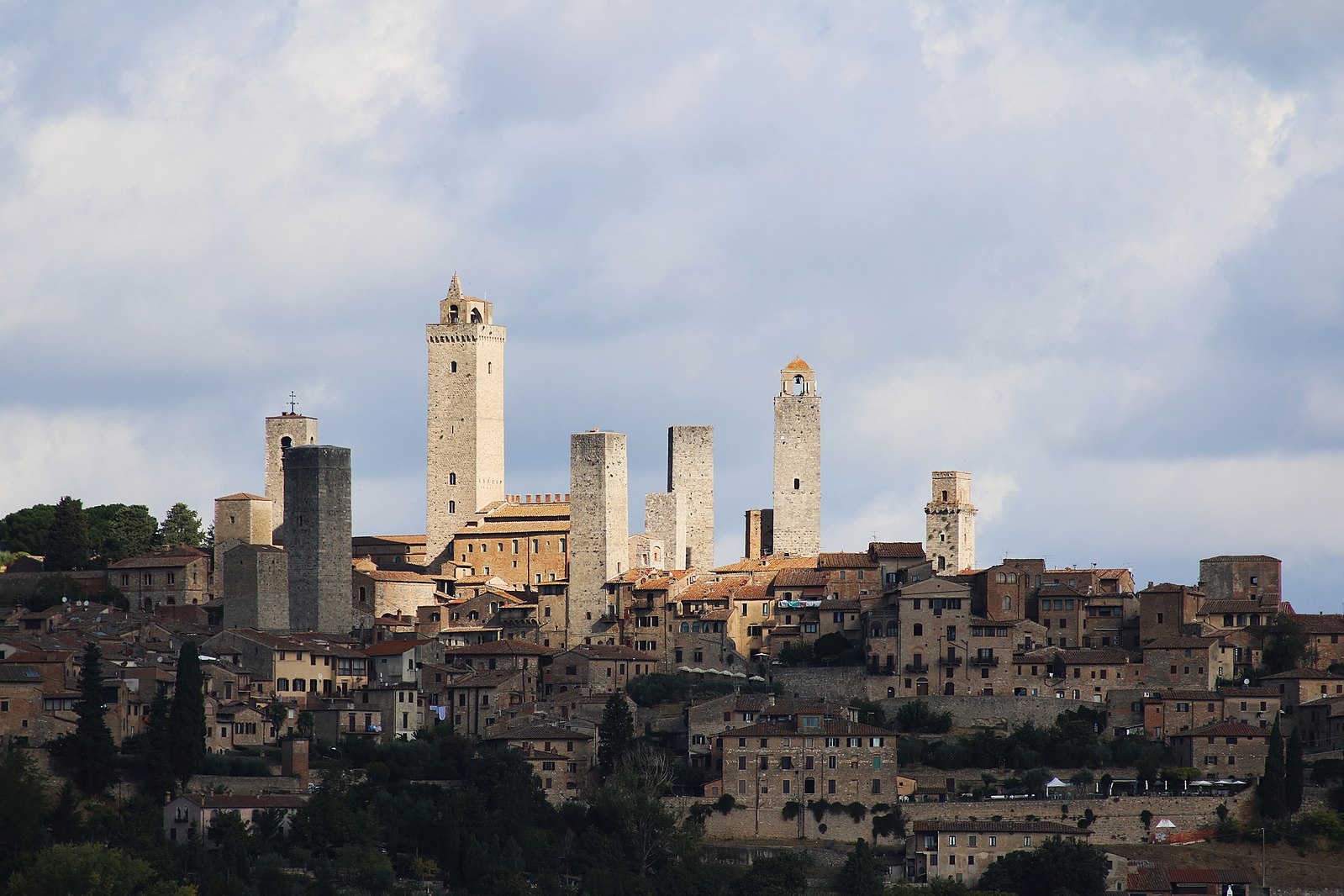Welcome to DU!
The truly grassroots left-of-center political community where regular people, not algorithms, drive the discussions and set the standards.
Join the community:
Create a free account
Support DU (and get rid of ads!):
Become a Star Member
Latest Breaking News
Editorials & Other Articles
General Discussion
The DU Lounge
All Forums
Issue Forums
Culture Forums
Alliance Forums
Region Forums
Support Forums
Help & Search
World History
Related: About this forumThe Lost Towers of the Guelph-Ghibelline Wars -- Italian history I did not know
https://www.exurbe.com/the-lost-towers-of-the-guelph-ghibelline-wars/
Looks fake, doesn’t it? This implausible Medieval forest of towers, as dense as Manhattan skyscrapers, is our best reconstruction of the town of Bologna at its height, toward the end of the Medieval Guelph-Ghibelline wars. We don’t see many such towers today… or think we don’t, but actually their remnants are all over Italy.
Often when in Florence one sees buildings like this, where one section is rough stone standing out amid stucco neighbors.

A photo of a street in Florence. Many tourists walk along and the buildings are all shops and eateries. In the center, conspicuous between buildings of yellow or beige stucco, is one building made of crude-looking yellowish stone, very rough and undecorated, with few windows and all small compared to its neighbors. A couple doors down, a second conspicuous stone section like this sticks up, also strangely blank and rough amid its yellow neighbors. Both stop about half a story above the roofs of the three-story buildings on either side of them.
These are actually the bottom nubs of Medieval stone towers. The town of San Gimigniano (below) is famous for having several still intact. Wealthy families built these as mini-fortresses within the city, where they could defend against riots, enemy families (think Montagues and Capulets) and invasion:
A classic image of the skyline of the town of San Gimigniano, with many smaller houses three or four stories tall with the characteristic Italian yellow stucco walls and terra cotta tiled roofs, but with eleven stone towers sticking up far above them, towering twelve stories or more. The towers are very plain and blank, just squares of stone without decoration and with few windows, clearly utilitarian more than aesthetic.

Signs of wealth and prestige, these all-stone buildings were also fireproof, leading to a terrible but effective tactic: take your family, treasures & goods up into your tower then set fire to enemies’ homes and let the city burn around you while you sit safe above. This was VERY BAD for cities.
Often when in Florence one sees buildings like this, where one section is rough stone standing out amid stucco neighbors.

A photo of a street in Florence. Many tourists walk along and the buildings are all shops and eateries. In the center, conspicuous between buildings of yellow or beige stucco, is one building made of crude-looking yellowish stone, very rough and undecorated, with few windows and all small compared to its neighbors. A couple doors down, a second conspicuous stone section like this sticks up, also strangely blank and rough amid its yellow neighbors. Both stop about half a story above the roofs of the three-story buildings on either side of them.
These are actually the bottom nubs of Medieval stone towers. The town of San Gimigniano (below) is famous for having several still intact. Wealthy families built these as mini-fortresses within the city, where they could defend against riots, enemy families (think Montagues and Capulets) and invasion:
A classic image of the skyline of the town of San Gimigniano, with many smaller houses three or four stories tall with the characteristic Italian yellow stucco walls and terra cotta tiled roofs, but with eleven stone towers sticking up far above them, towering twelve stories or more. The towers are very plain and blank, just squares of stone without decoration and with few windows, clearly utilitarian more than aesthetic.

Signs of wealth and prestige, these all-stone buildings were also fireproof, leading to a terrible but effective tactic: take your family, treasures & goods up into your tower then set fire to enemies’ homes and let the city burn around you while you sit safe above. This was VERY BAD for cities.
Found this from Cory Doctorow's very wide-ranging blog
https://pluralistic.net/2025/01/18/ragbag/#reading-pornhub-for-the-articles
Speaking of weird ancient history, my pal Ada Palmer – sf writer, librettist, singer, and Renaissance historian – blew my mind this week with her article on the tower-cities of medieval proto-Italy during the Guelph-Ghibelline wars (1125-1392):
https://www.exurbe.com/the-lost-towers-of-the-guelph-ghibelline-wars/
Once upon a time, Italian city-states were forested with tall towers, like miniature Manhattans. Rich families built these stone towers as a show of wealth and a source of power, since the stone towers were taller than nearby homes and far less flammable, so the plutes of the day could drop flaming garbage on their neighbors, burn them out, and emerge triumphant. This ended with cities like Florence banning towers above a certain height, forcing their warring oligarchs to decapitate their fortresses down to compliance levels.
https://www.exurbe.com/the-lost-towers-of-the-guelph-ghibelline-wars/
Once upon a time, Italian city-states were forested with tall towers, like miniature Manhattans. Rich families built these stone towers as a show of wealth and a source of power, since the stone towers were taller than nearby homes and far less flammable, so the plutes of the day could drop flaming garbage on their neighbors, burn them out, and emerge triumphant. This ended with cities like Florence banning towers above a certain height, forcing their warring oligarchs to decapitate their fortresses down to compliance levels.
1 replies
 = new reply since forum marked as read
Highlight:
NoneDon't highlight anything
5 newestHighlight 5 most recent replies
= new reply since forum marked as read
Highlight:
NoneDon't highlight anything
5 newestHighlight 5 most recent replies
The Lost Towers of the Guelph-Ghibelline Wars -- Italian history I did not know (Original Post)
erronis
Jan 2025
OP
Srkdqltr
(9,313 posts)1. Interesting.
People were/are the same, no matter where or when.